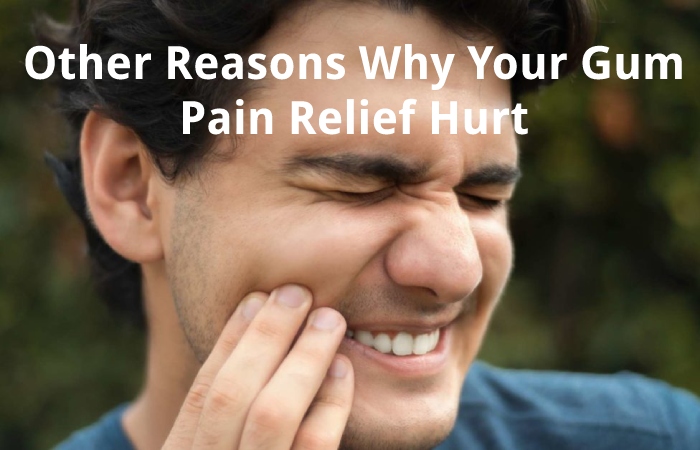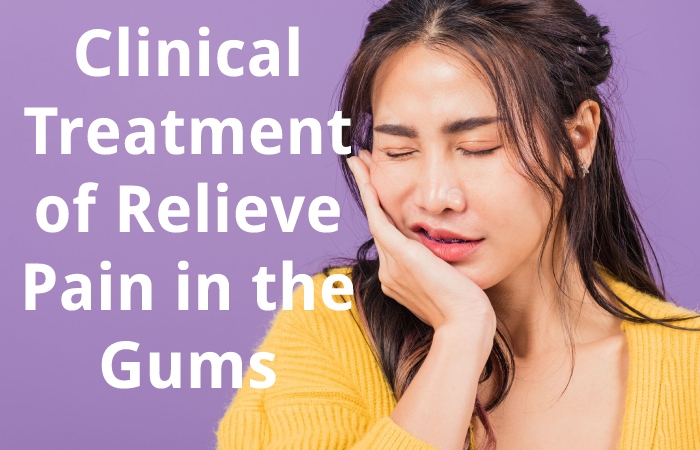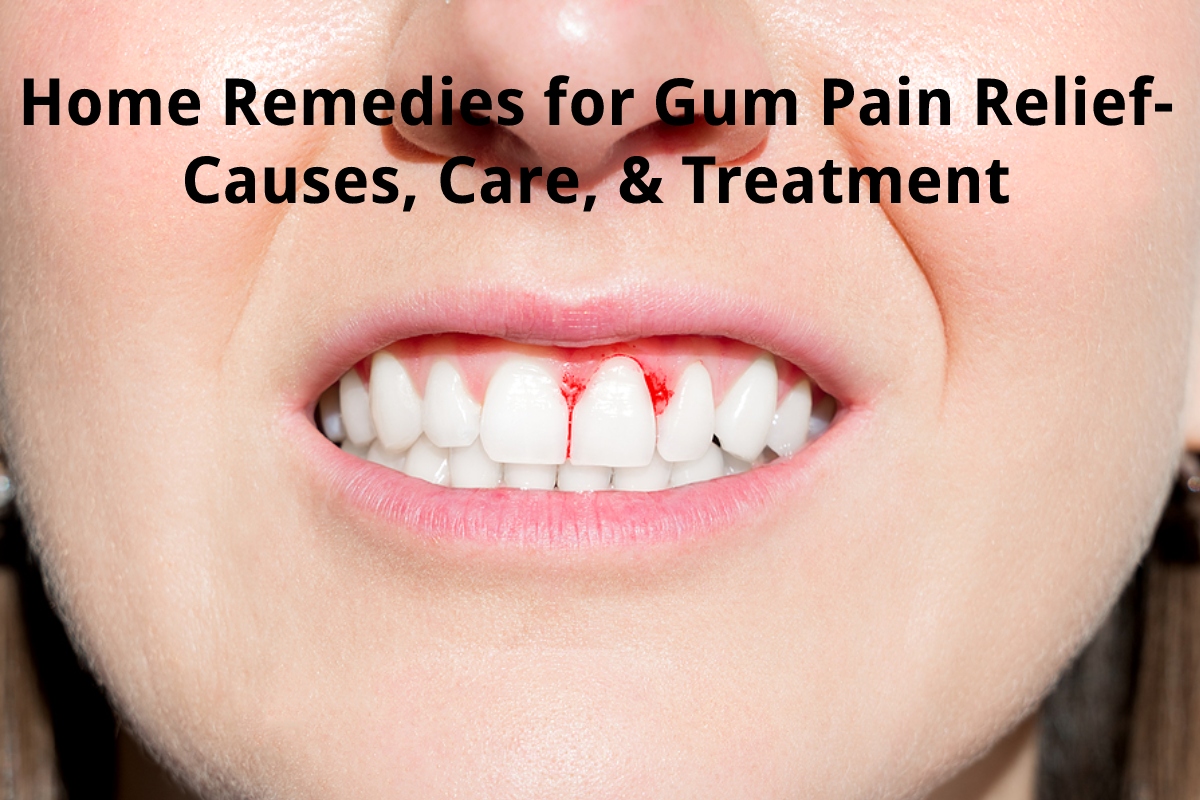Table of Contents
Gum Pain Relief
Gum pain relief is usually linked to inflammation and bleeding and is a widespread pathology among the general population, especially in people between 30 and 50 years of age. It can appear as a punctual pain associated with a wound or trauma. Still, gum pain that persists over time and is very localized is the most worrying since it can be a symptom of periodontal disease.
Leading Causes of Gum Pain Relief
The most common causes of gum pain are usually periodontal diseases, which, like infectious processes caused by bacteria in our mouth, cause inflammation and irritation of the gums and discomfort. There are two stages of periodontal disease that cause gum pain. We describe them below:
Gingivitis
It is a periodontal disease caused by the accumulation of bacterial plaque that causes inflammation in the gums, redness, and bleeding of the gingival area. The main factor that causes it is poor dental hygiene: not brushing correctly, doing it aggressively, and not using dental floss. All this favours the appearance of gingivitis.
Periodontitis
This is the advanced stage of gingivitis, where the bacteria have affected the soft tissues and the maxillary bone, putting the sustenance of the teeth at risk. This type of infection causes symptoms such as bad breath, red or bleeding gums, gingival inflammation, pain, and movement of the teeth.
Other Reasons Why Your Gum Pain Relief Hurt

In addition to periodontal diseases such as gingivitis and periodontitis, there are other causes for which the gums can become sore. These are some of them:
After prophylaxis: after a professional cleaning where the hygienist has to scrape the gum area to remove bacterial plaque, it is normal for the gums to become inflamed and painful.
After a teeth whitening treatment: the products used during a teeth whitening session can cause tooth sensitivity. When this occurs, the patient feels localized and intense pain in contact with very hot or cold food or drinks. However, the discomfort should disappear when the teeth and gums separate from the external stimulus.
Hormonal changes: although gestational gingivitis is common knowledge, gum pain is not only associated with pregnancy but also with all the hormonal changes that women experience. For example, after childbirth, before menstruation
After the placement of an implant: the intervention for the post of an implant is quite invasive, so it is common for the days after surgery to feel pain in the gums near the dental implant.
After tooth extraction, it is normal to feel pain in the gums around the extracted tooth. This is because the extraction will produce inflammation in them, and until it subsides, pain can suffer.
After undergoing a root canal: as in the previous cases, when a tooth is surgically intervened, which in this case has undergone a root canal, the gums that surround it affect by the manipulation carried out by the professional, and therefore, they may experience pain and swelling of the nearby gingival area.
Remedies for Gum Pain Relief
Once we have diagnosed where our problem is, it is time to find a solution to soothe gum pain.
Apply Cold
Applying cold is quick, albeit temporary, solution to relieve sore gums. It is benefits if we are dealing with a case of periodontal disease and the inflammation is such that it hurts even without brushing our teeth or eating. To reduce discomfort, use some ice wrapped in a cloth and gently rub it over the swollen area. Remember not to have it on the gum for many minutes and take about 5 or 10 minutes breaks.
Watch Your Diet
Bacteria cause periodontal disease in the gums, so reducing sugar consumption is always a positive measure. However, foods or drinks with a high sugar content accelerate the harmful action of bacteria, so it is advisable to opt for other types of food: vegetables, fruit, or dairy products contribute to gingival recovery, as they provide the necessary vitamin intake to have healthy gums.
Take Care of your Dental Hygiene of Gum Pain Relief
At the slightest symptom of swelling or gingival pain, strive to have even more exhaustive hygiene routines at home. Contrary to popular belief, we should continue brushing when the gum begins to bleed. The sweeping motion to brush our teeth massages the gums and, after a few days, helps reduce bleeding and inflammation.
Use an Antibacterial Mouthwash
Don’t limit yourself to brushing: use an antibacterial mouthwash. When it comes to specific pain not associated with periodontal pathology, it is common for the pain to subside using a specially indicated to treat the gums. The use of mouthwashes with chlorhexidine is beneficial. However, the recommendation of a specialist is necessary before resorting to them since it is not advisable to use them for many days in a row.
Home Remedies for Swollen and Bleeding Gums
Treatment of Swollen Gums:
If you have swollen and sore gums, you can find pain relief while taking steps to help your gums heal:
- Apply clove oil to swollen gums or chew cloves to reduce swelling and relieve pain.
- Make a paste of ginger and salt. Rub directly on the gums.
- Gargle with boiled lemon juice twice a day.
- Rinse your mouth with salt water (one tablespoon of salt in eight ounces).
- Scrub a mixture of baking soda and turmeric excerpt on your swollen gums.
- Create a mouthwash with essential oils like peppermint, tea tree, and chamomile.
- Apply castor seed oil and camphor adhesive to swollen and painful gums.
- Gargle with a tea made from boiled Lawsonia inermis leaves.
- Rub aloe vera gel on the affected gums to reduce bleeding and pain.
- Make a mouthwash by boiling the bark of the babul tree in water.
What to Do for Gum Pain Relief?
Visit your dentist. HE will be able to give you a professional diagnosis and a personalized remedy for sore gums. He may also recommend some of the following home remedies and prevention measures. First, eat something cold: Frozen grapes, cold water, and ice cubes can relieve pain and even help reduce swelling temporarily.
Take an anti-inflammatory to reduce swelling and help your gums heal. Medications should be taken with medical and adult supervision.
Update your oral hygiene: use a gentle and gentle toothpaste like Zendrum, get a new toothbrush with soft bristles, read up on brushing techniques, and make sure you’re flossing thoroughly. Your sore gums could be a cautionary sign of gingivitis, which can avoid by keeping up with your dental care at home.
Clinical Treatment of Relieve Pain in the Gums

Among the main clinical treatments to relieve pain in the gums are:
Dental Cleanings
It is one of the best ways to end the pain of swollen gums. With cleaning, what is sought is to eliminate all the remains of plaque, and bacterial products that accumulate tartar. This procedure consists of scaling and root planning. The first phase of scraping is sought to eliminate all the accumulated tartar and smoothing to smooth the effect of the causes of pain in the gums.
Tooth Restoration
Depending on the diagnosis of pain in the gums, if there are teeth that have misaligned due to this situation, the ideal is to be able to implement a dental restoration. Similarly, the dentist is in charge of defining whether this is necessary.
Continuous Care
In most cases, the pain of swollen gums can eliminate after having undergone a deep professional cleaning; however, it is essential to maintain good dental cleaning habits to prolong the result and avoid going through sore gums again.
Oral health requires a lot of attention since we can avoid certain conditions. Such as gum pain, healthy project teeth, and a healthy smile.
Conclusion
Pain in the gums can become very uncomfortable when not treated early. It can affect all members of the family. This ailment could be the first symptom of periodontal disease. Identifying the causes would allow us to know which home remedies to use to minimize the discomfort.
Also Read: Healthy Japanese Foods – Benefits, Diet, Secrets, Tracking, & More

